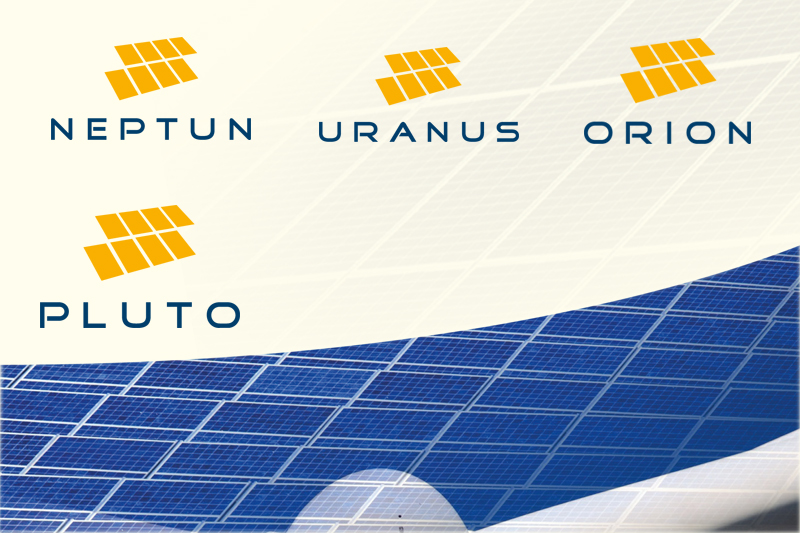Our office hours: Mo - Fr 8.00 - 15.30

27.09.2023: Donation to TSG Grün-Weiß Möser

Mando-KG-Sponsoring

New Managing Director of our companies Neptune, Pluto, Uranus and Orion
We are pleased to welcome Stefan Helmeke as the new Managing Director of our companies Neptune, Pluto, Uranus and Orion from 01.04.2021. In this role, he replaces Ronny Henze and Holger Ullmann, with whom we have already been working together in a spirit of trust for many years. In this way, we are consistently pursuing the path of handing over responsibility to younger hands in good time.
.jpg)
Purchase of an electric car via partCar
Another step toward climate-neutral driving has been taken. By purchasing an electric car via partCar, we as "anchor tenants" and also other drivers can make a significant contribution to environmentally conscious behavior via car sharing. In doing so, we have the station directly in Biederitz.
Potential of solar energy
As the largest source of energy, the sun delivers an amount of energy of about 1.5 - 1018 kWh to the earth's surface per year. This amount of energy corresponds to more than 10,000 times the world energy demand of mankind in 2010 (1.4 × 1014 kWh/year).
The composition of the solar spectrum, the duration of sunshine and the angle at which the sun's rays fall on the earth's surface depend on the time of day, season and latitude. Thus, the irradiated energy also differs. For example, this amounts to about 1,000 kWh per square meter per year in Central Europe and about 2,350 kWh per square meter per year in the Sahara. There are various scenarios of how a regenerative energy supply for the EU can be realized, including energy conversion in North Africa and high-voltage direct current transmission. For example, satellite-based studies by the German Aerospace Center (DLR) showed that less than 0.3 percent of the available desert land in North Africa and the Middle East could be used by thermal solar power plants to generate enough energy and water to meet the growing needs of these countries as well as Europe.[7] The Trans-Mediterranean Renewable Energy Cooperation, an international network of scientists, politicians and experts in the fields of renewable energy and its development, advocates such cooperative use of solar energy. A publication from the U.S. called the Solar Grand Plan proposes a similar use of solar energy in the United States.
It has also been considered to capture solar energy by satellite and transmit it to Earth.[8] The advantage would be a higher energy density on the ground and the avoidance of day-night fluctuations. However, due to the large expenditure necessary for this, far above all previous space technology, none of these projects has been concretely tackled.
The advantages of using solar energy are seen to include the following:
- In contrast to fossil fuels or fissile isotopes, it is available in unlimited quantities according to human judgement.
- Today, 60,000 people already work in the German solar industry. Over 100 companies supply solar cells, modules and components, and many more are involved in planning and installing solar systems. Around 10 billion euros are turned over here every year, and two-thirds of the value added remains in Germany. The public sector collects 3 billion euros in taxes as a result.
- In addition, solar power saves fuel imports - currently about 400 million euros annually.
- Solar energy is climate-friendly, greenhouse gases are only produced during the production of the system - operation is emission-free. Solar energy reduced CO2 emissions by 3.6 million tons in 2009 alone.
- There is no release of fine dust, such as soot particles

Broad generation mix secures power supply
From 1999 onwards, the importance of renewable energy sources in the electricity mix increases significantly. Thus, between 1998 and 2012, the share of electricity generated from renewable sources increases from approx. 4.7 % to approx. 22.8 %. Since electricity generation from renewable sources does not cause direct CO2 emissions, its increase lowers the emission factor for the electricity mix. However, this positive effect is clearly overshadowed by the aforementioned commissioning of new fossil-fuel power plant capacities in the years 1999 to 2001. It is only from 2002 that the increasing share of renewable energies is visibly reflected in the development of the indicator. This explains the development of absolute and specific emissions. Another influencing factor in 2013 and 2014 was the interaction between fuel prices (higher prices for natural gas) and the resulting higher share in the use of fuels with higher carbon content (Fig. 2).
Press release - Germany weather 2015
2015 second warmest year in Germany - together with 2000 and 2007
Offenbach, December 30, 2015 - The year 2015 reached an average temperature of around 9.9 degrees Celsius (°C) in Germany. According to initial evaluations of the results from the approximately 2,000 measuring stations of the German Meteorological Service(DWD) , this is likely to be the second warmest year in Germany since the start of nationwide measurements in 1881, together with the years 2000 and 2007. The temperature record is held by far by 2014 with 10.3 °C. The past 12 months have also been too dry and sunny, according to the national weather service. In 2015, ten out of 12 months were too warm in this country. Only September and October remained below their multi-year average. August was the second warmest month, while November and December were the warmest since 1881. In July and August, Germany was so extremely hot that a new German temperature record of 40.3 °C was set in Kitzingen in Lower Franconia.
Source: Whole article >>Download<<
Products
Clean, safe and renewable energies are important to us. Therefore, our interest is not only in the construction of photovoltaic plants, but also in the construction of electricity and heat generation plants for partial or even complete self-sufficiency on site.
© Mando GmbH & CO KG | Implementation Pixxelsolutions - Agency for print media and online media












